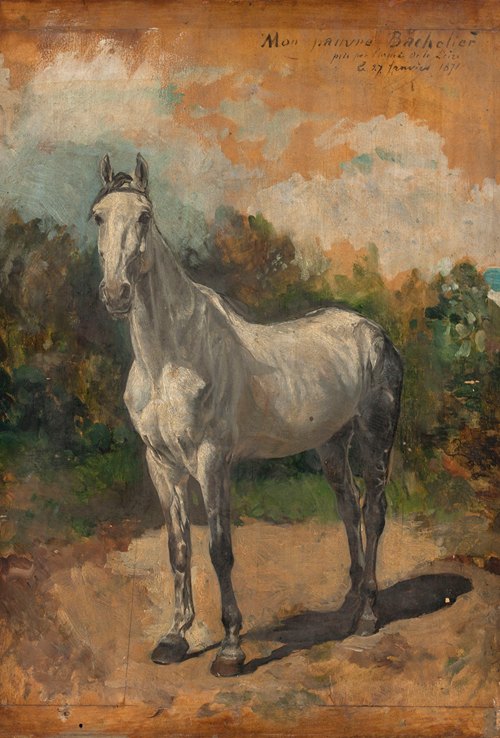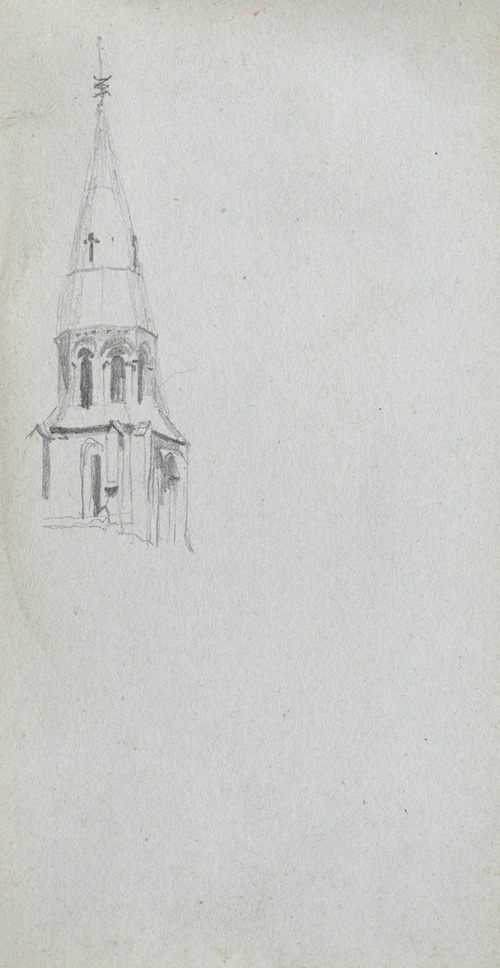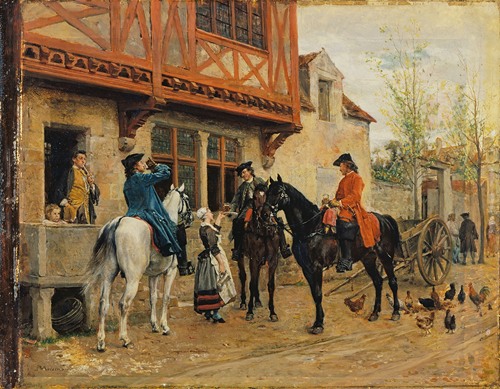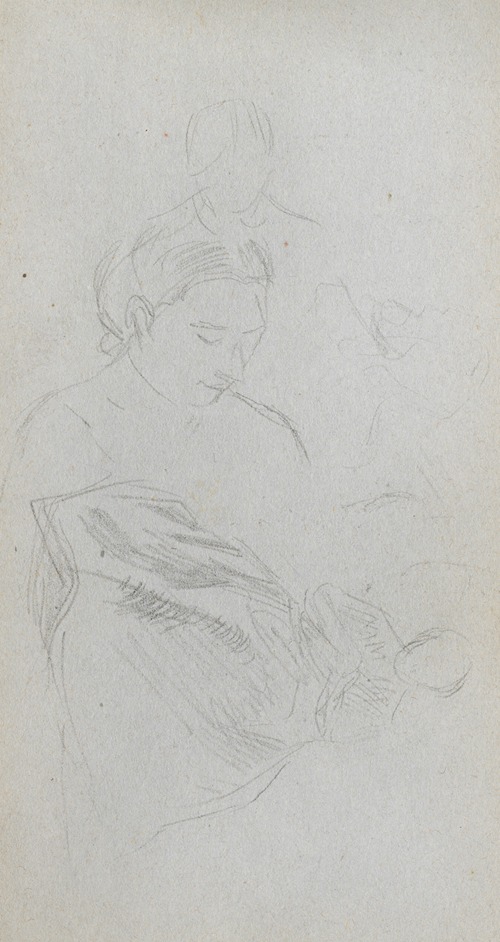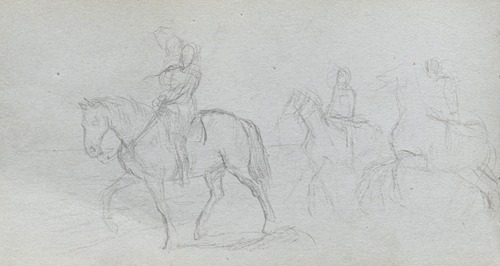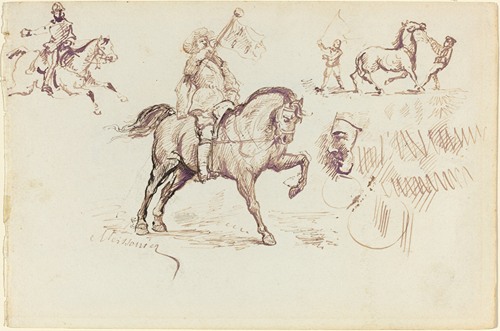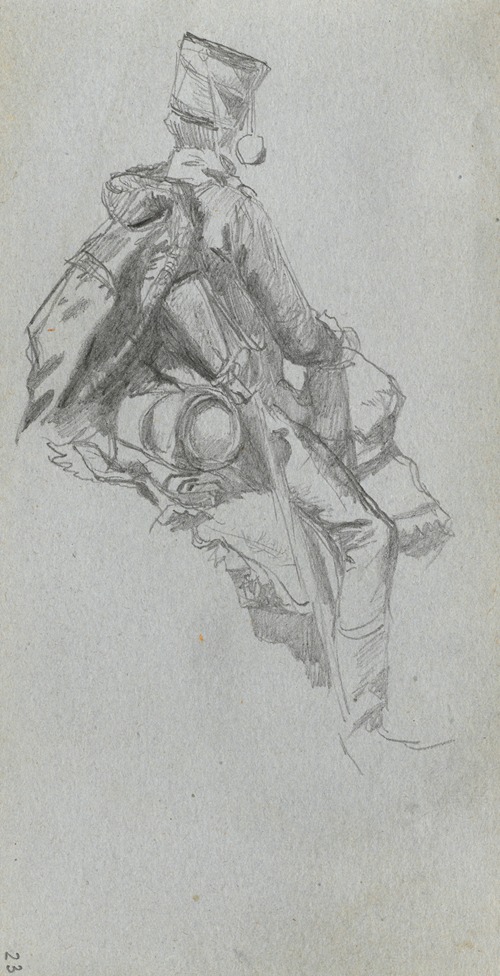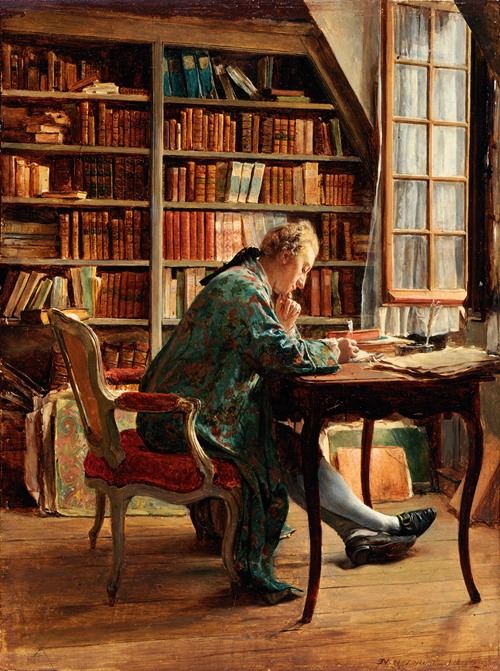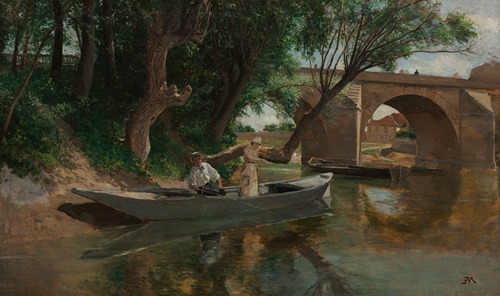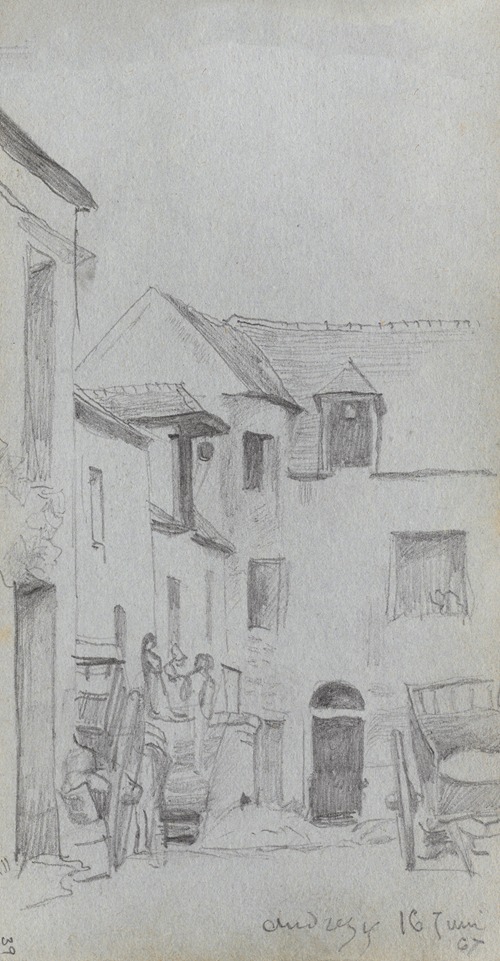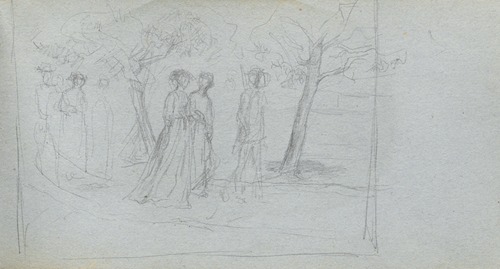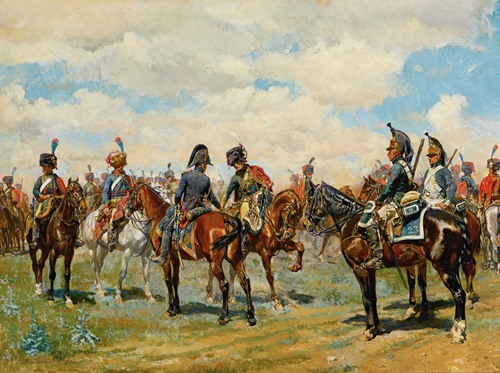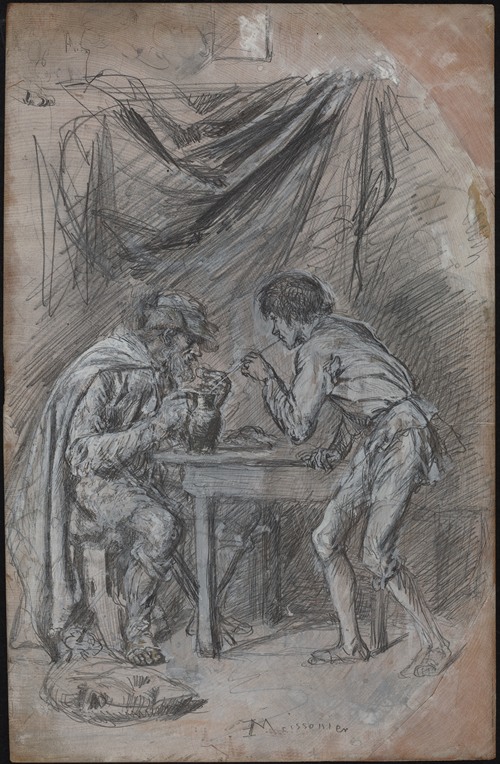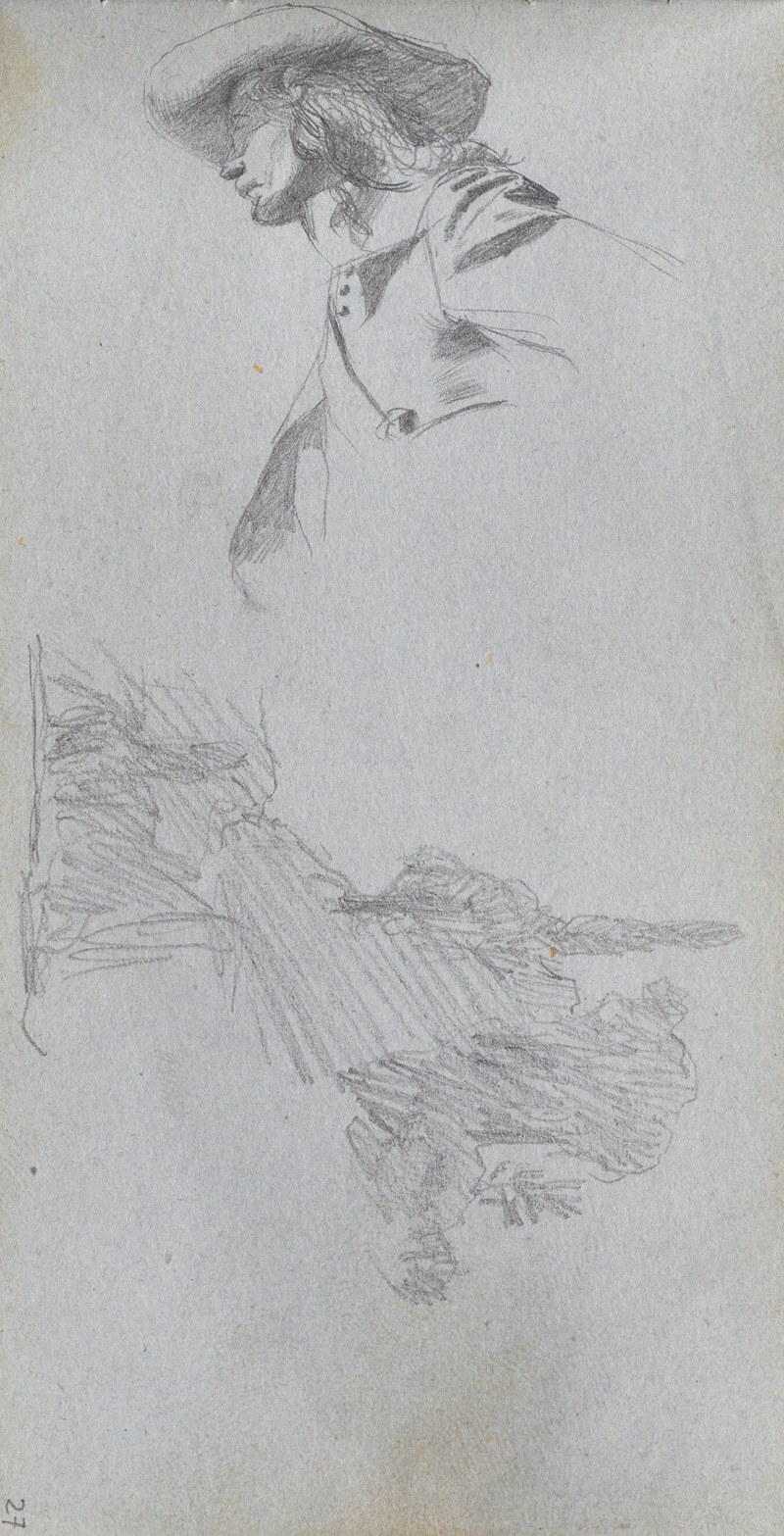

Jean-Louis-Ernest Meissonier was a French Classicist painter and sculptor famous for his depictions of Napoleon, his armies and military themes. He documented sieges and manoeuvres and was the teacher of Édouard Detaille.
Meissonier enjoyed great success in his lifetime, and was acclaimed both for his mastery of fine detail and assiduous craftsmanship. The English art critic John Ruskin examined his work at length under a magnifying glass, "marvelling at Meissonier's manual dexterity and eye for fascinating minutiae".
Meissonier's work commanded enormous prices and in 1846 he purchased a great mansion in Poissy, sometimes known as the Grande Maison. The Grande Maison included two large studios, the atelier d'hiver, or winter workshop, situated on the top floor of the house, and at ground level, a glass-roofed annexe, the atelier d'été or summer workshop. Meissonier himself said that his house and temperament belonged to another age, and some, like the critic Paul Mantz for example, criticised the artist's seemingly limited repertoire. Like Alexandre Dumas, he excelled at depicting scenes of chivalry and masculine adventure against a backdrop of pre-Revolutionary and pre-industrial France, specialising in scenes from seventeenth- and eighteenth-century life.
